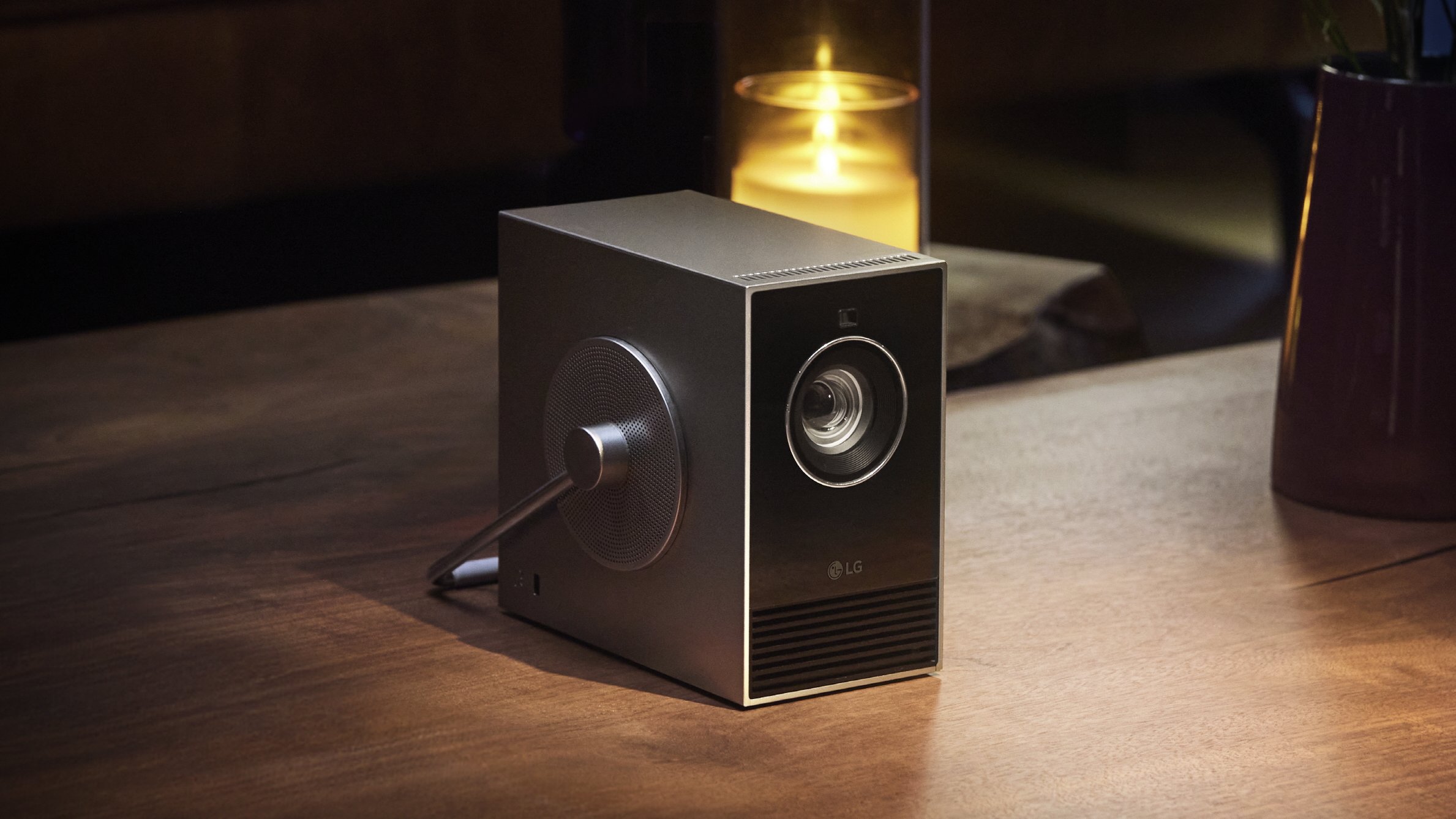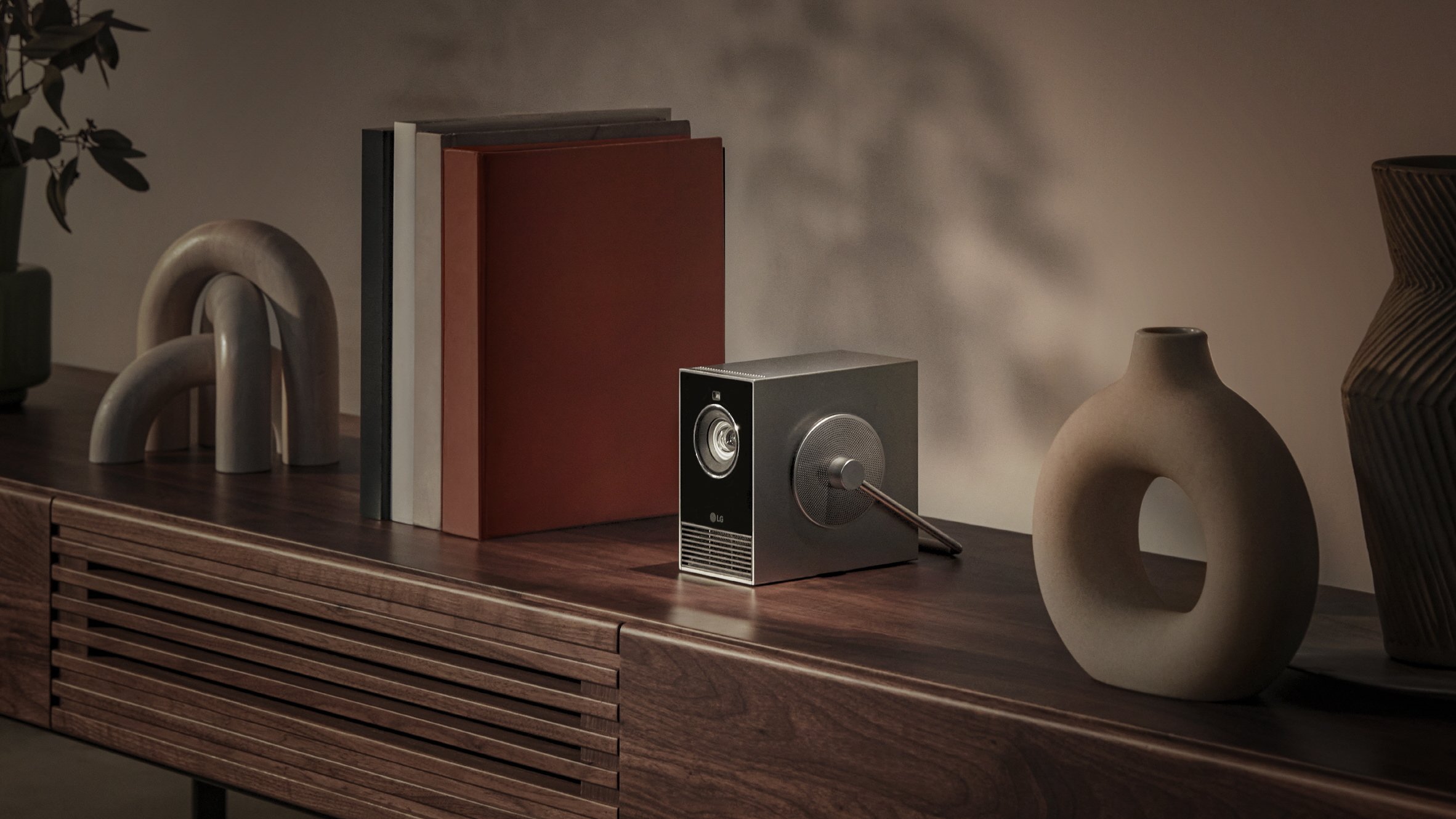LG aims for Samsung's portable projector crown with its stylish new 4K projector
LG’s answer to the Samsung Freestyle, but with 4K

LG has announced its latest projector, the CineBeam Qube (model HU710PB), a 4K portable smart projector. The Qube not only offers a compact solution for home theater, but also doubles as an ‘art object’ to fit with the aesthetic of any room, thanks to its minimalist design. While we have no release date or pricing info yet, hopefully we can get this info when we attend CES 2024 next week, where the LG CineBeam Qube will be on display.
Although it’s one of the smallest projectors around, sitting at 3.1 x 5.3 x 5.3 inches/ 80 x 135 x 135mm and weighing 3.2lbs/1.49 kg, the CineBeam Qube can still project images up to 120 inches in size in 4K resolution. The Qube also uses RGB laser technology as its light source, boasting up to 450,000:1 contrast ratio, 500 ANSI lumens and a DCI-P3 color gamut coverage of 154%.
In terms of features, the Qube uses LG’s webOS 6.0 as its smart platform, enabling access to streaming apps such as Netflix, Disney Plus, Prime Video and YouTube, and also features both Android and iOS streaming compatibility. The Qube also supports HDR10 and comes equipped with an HDMI port with eARC functionality for those looking to add one of the best soundbars. There’s a built-in auto screen adjustment setting for optimizing image size and placement.
The CineBeam Qube not only serves as a projector but thanks to its modern and minimal design, LG feels it could "double an art object", fitting into any room serving as a "stylish interior accessory". It also features a rotatable 360-degree handle.
Whilst it’s not going to compete with the best 4K projectors around for absolute image quality, could the LG CineBeam Qube be an exciting new addition to the world of portable projectors and provide a real rival to the popular Samsung Freestyle?

A new portable projector contender
The Samsung Freestyle is amongst one of the best portable projectors and for good reason. It covers a lot of the bases, including picture quality, streaming capabilities and thanks to frequent price drops, a competitive price. So what can the LG CineBeam Qube offer instead?
For starters, the Qube is 4K, whereas the Samsung Freestyle (both Gen 1 and 2 versions) is only Full HD, so we'd expect an extra level of detail to images. In terms of size projection, the Qube also offers an extra 20-inch maximum screen size, with 120 inches to the Freestyle’s 100-inch maximum.
Sign up for breaking news, reviews, opinion, top tech deals, and more.
The Qube also boasts a much higher contrast ratio in comparison to the Freestyle, with each projector offering 450,000:1 and 100,000:1 respectively, meaning you should get a more balanced and detailed-feeling image on the Qube. Interestingly though, both the Qube and Freestyle (Gen 1) offer around 500 ANSI lumens, meaning you can expect similar brightness levels on both projectors. It's just that the Qube should offer more nuance in dark scenes, at least according to LG's claims.
Although both the Qube and the Freestyle offer HDMI ARC compatibility, the fact that the Qube’s is a standard HDMI port as opposed to the Freestyle’s micro-HDMI port makes life a lot easier when it comes to hooking something up to the Qube, as standard HDMI cables are much more widely available.
On paper then, it seems the LG CineBeam Qube could be a real rival to the Samsung Freestyle as although both offer streaming capabilities, the Qube’s overall picture quality and physical design (arguably) should be better. Portable projectors are becoming a formidable alternative to traditional home theater projectors, and if LG can get the price right, we could be looking at the new king of portables.
Update: On March 18, LG updated the name of the CineBeam Qube to CineBeam Q, while also releasing the official pricing of the projector at $1,299.99 / £1,299.99 (roughly AU$1,980) .
You might also like...

James is the TV Hardware Staff Writer at TechRadar. Before joining the team, he worked at a major UK based AV retailer selling TV and audio equipment, where he was either telling customers the difference between OLED and QLED or being wowed by watching a PS5 run on the LG 65G2. When not writing about the latest TV tech, James can be found gaming, reading, watching rugby or coming up with another idea for a novel.